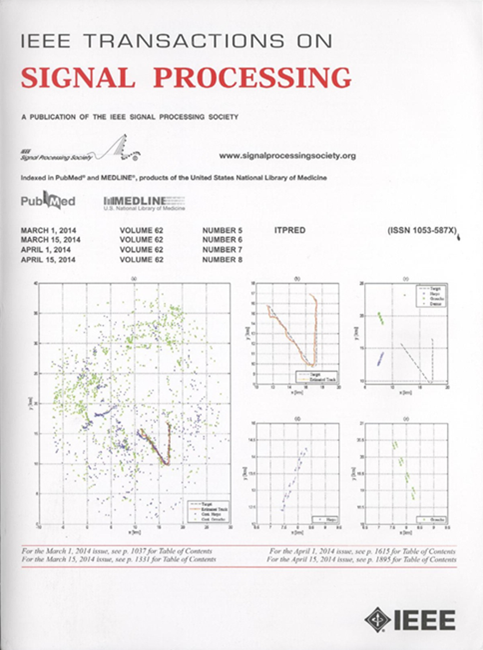Direct Multipath-Based SLAM
IF 4.6
2区 工程技术
Q1 ENGINEERING, ELECTRICAL & ELECTRONIC
引用次数: 0
Abstract
Radio-based localization approaches that make use of reflections in the propagation environment to improve the accuracy and robustness of location estimates have a variety of potential applications in future wireless communication networks. Multipath-based simultaneous localization and mapping (SLAM) aims at estimating the position of agents and reflecting features in the environment by exploiting the relationship between the local geometry and multipath components (MPCs) in received radio signals. Existing multipath-based SLAM methods preprocess received radio signals using a channel estimator. The channel estimator lowers the data rate by extracting a set of dispersion parameters for each MPC. These parameters are then used as measurements for SLAM. Bayesian estimation for multipath-based SLAM is facilitated by the lower data rate. However, due to finite resolution capabilities limited by signal bandwidth, channel estimation is prone to errors and MPC parameters may be extracted incorrectly and lead to a reduced SLAM performance. We propose a multipath-based SLAM approach that directly uses received radio signals as inputs. A new statistical model that can effectively be represented by a factor graph is introduced. The factor graph is the starting point for the development of an efficient belief propagation (BP) method for multipath-based SLAM that avoids data preprocessing by a channel estimator. Numerical results based on synthetic and real data in challenging single-input, single-output (SISO) scenarios demonstrate that the proposed method outperforms conventional methods in terms of localization and mapping accuracy.直接多路径SLAM
基于无线电的定位方法利用传播环境中的反射来提高定位估计的精度和鲁棒性,在未来的无线通信网络中具有各种潜在的应用。基于多路径的同步定位和映射(SLAM)旨在通过利用接收到的无线电信号中的局部几何形状和多路径分量之间的关系来估计智能体的位置并反映环境中的特征。现有的基于多路径的SLAM方法使用信道估计器对接收的无线电信号进行预处理。信道估计器通过为每个MPC提取一组色散参数来降低数据速率。然后将这些参数用作SLAM的度量。较低的数据速率有利于基于多路径SLAM的贝叶斯估计。然而,由于受信号带宽的限制,分辨率能力有限,信道估计容易出错,MPC参数可能被错误提取,导致SLAM性能下降。我们提出了一种基于多路径的SLAM方法,直接使用接收到的无线电信号作为输入。提出了一种新的能用因子图表示的统计模型。因子图是开发一种有效的基于多路径SLAM的信念传播(BP)方法的起点,该方法避免了信道估计器对数据的预处理。在具有挑战性的单输入单输出(SISO)场景下,基于合成数据和实际数据的数值结果表明,该方法在定位和映射精度方面优于传统方法。
本文章由计算机程序翻译,如有差异,请以英文原文为准。
求助全文
约1分钟内获得全文
求助全文
来源期刊

IEEE Transactions on Signal Processing
工程技术-工程:电子与电气
CiteScore
11.20
自引率
9.30%
发文量
310
审稿时长
3.0 months
期刊介绍:
The IEEE Transactions on Signal Processing covers novel theory, algorithms, performance analyses and applications of techniques for the processing, understanding, learning, retrieval, mining, and extraction of information from signals. The term “signal” includes, among others, audio, video, speech, image, communication, geophysical, sonar, radar, medical and musical signals. Examples of topics of interest include, but are not limited to, information processing and the theory and application of filtering, coding, transmitting, estimating, detecting, analyzing, recognizing, synthesizing, recording, and reproducing signals.
 求助内容:
求助内容: 应助结果提醒方式:
应助结果提醒方式:


